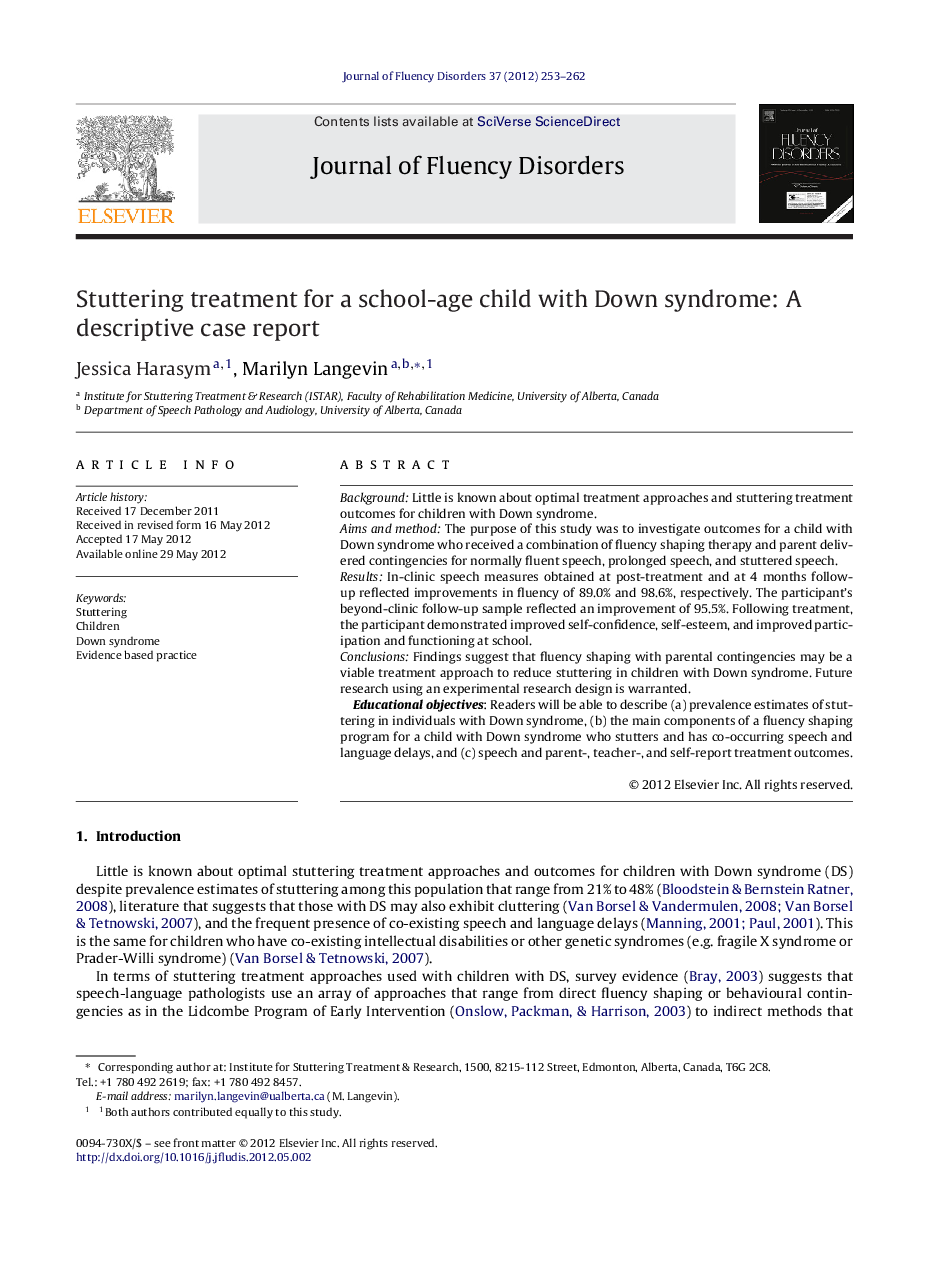| Article ID | Journal | Published Year | Pages | File Type |
|---|---|---|---|---|
| 911419 | Journal of Fluency Disorders | 2012 | 10 Pages |
BackgroundLittle is known about optimal treatment approaches and stuttering treatment outcomes for children with Down syndrome.Aims and methodThe purpose of this study was to investigate outcomes for a child with Down syndrome who received a combination of fluency shaping therapy and parent delivered contingencies for normally fluent speech, prolonged speech, and stuttered speech.ResultsIn-clinic speech measures obtained at post-treatment and at 4 months follow-up reflected improvements in fluency of 89.0% and 98.6%, respectively. The participant's beyond-clinic follow-up sample reflected an improvement of 95.5%. Following treatment, the participant demonstrated improved self-confidence, self-esteem, and improved participation and functioning at school.ConclusionsFindings suggest that fluency shaping with parental contingencies may be a viable treatment approach to reduce stuttering in children with Down syndrome. Future research using an experimental research design is warranted.Educational objectives: Readers will be able to describe (a) prevalence estimates of stuttering in individuals with Down syndrome, (b) the main components of a fluency shaping program for a child with Down syndrome who stutters and has co-occurring speech and language delays, and (c) speech and parent-, teacher-, and self-report treatment outcomes.
► In-clinic measured improvements in fluency following treatment ranged from 89.0% to 98.6%. ► A beyond-clinic follow-up speech sample reflected an improvement in fluency of 95.5%. ► Improved self-confidence, self-esteem, and improved participation and functioning at school were reported.
